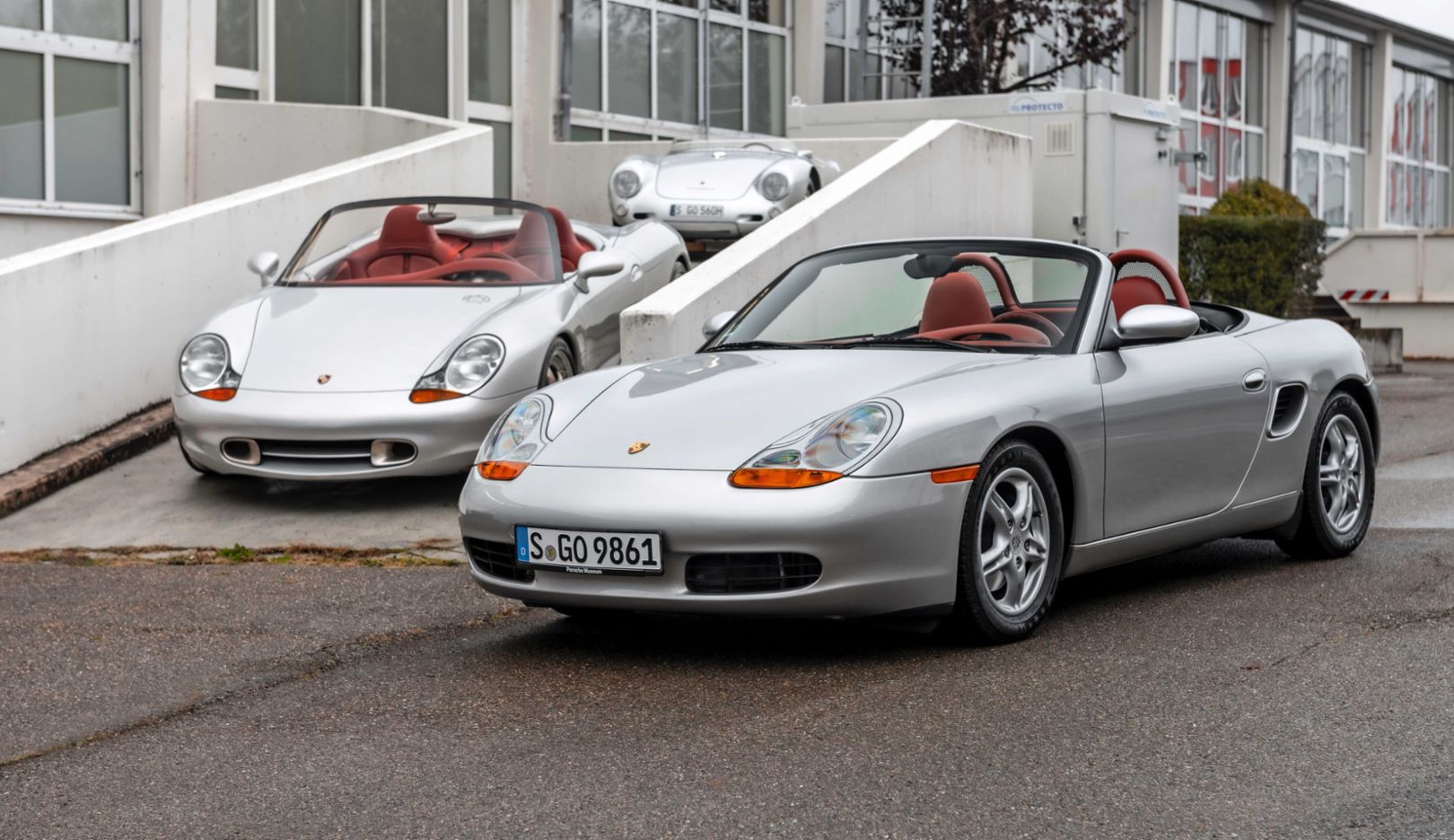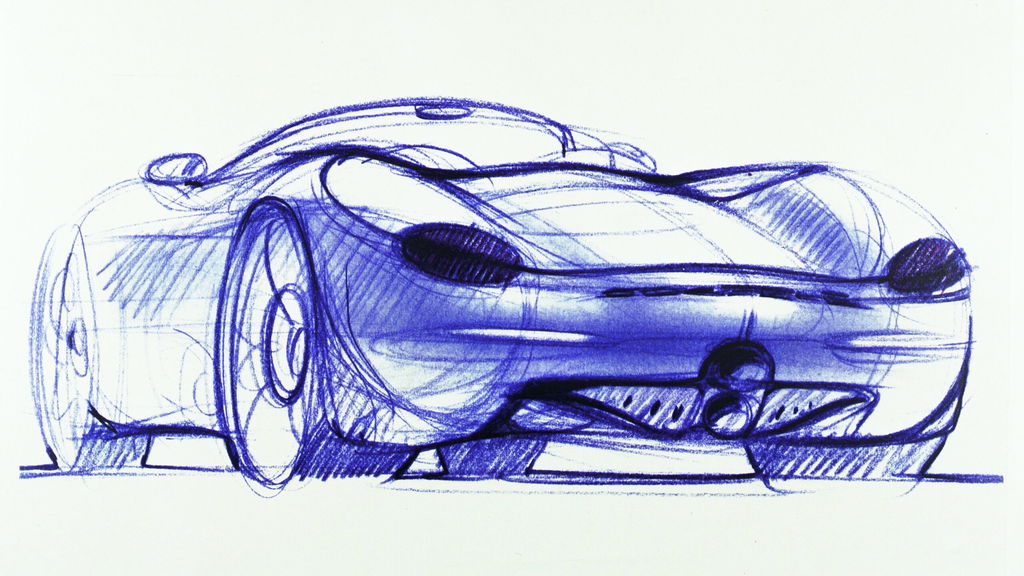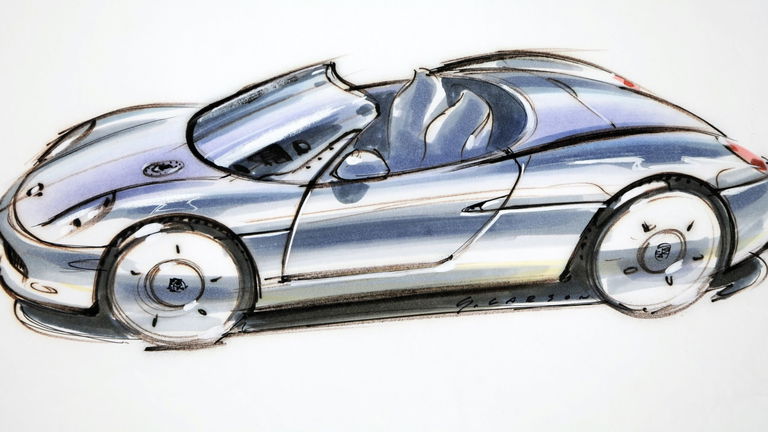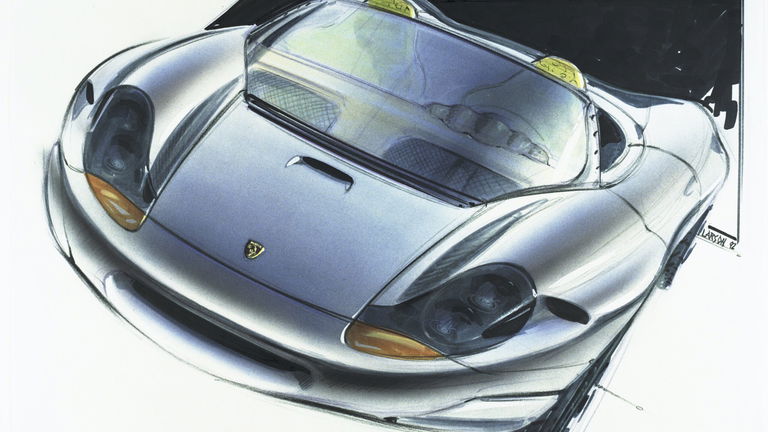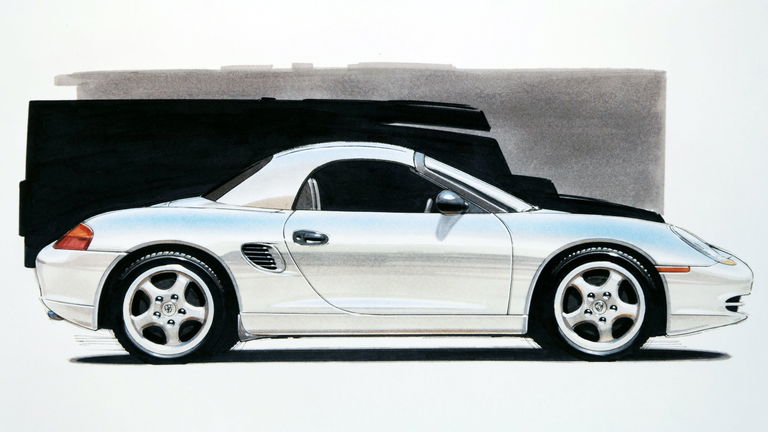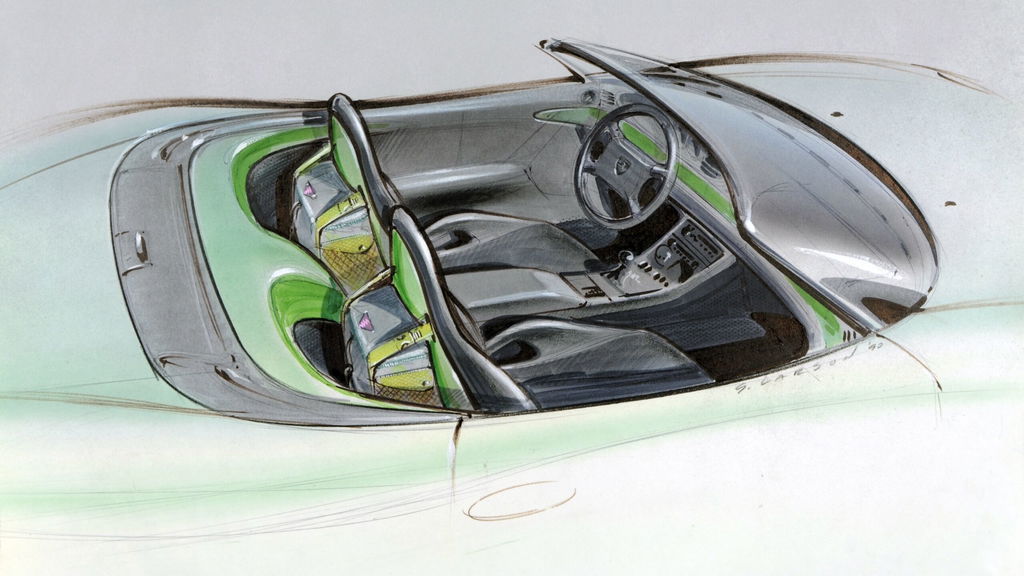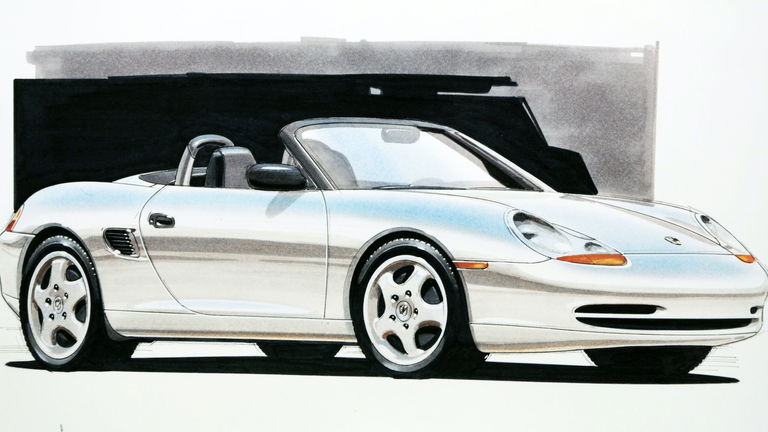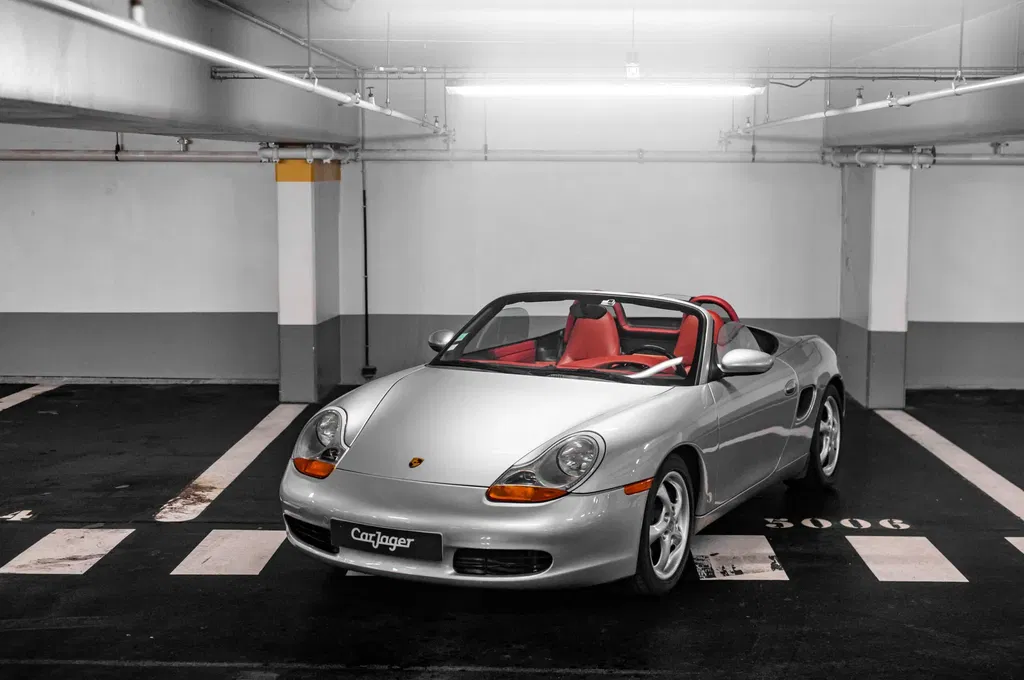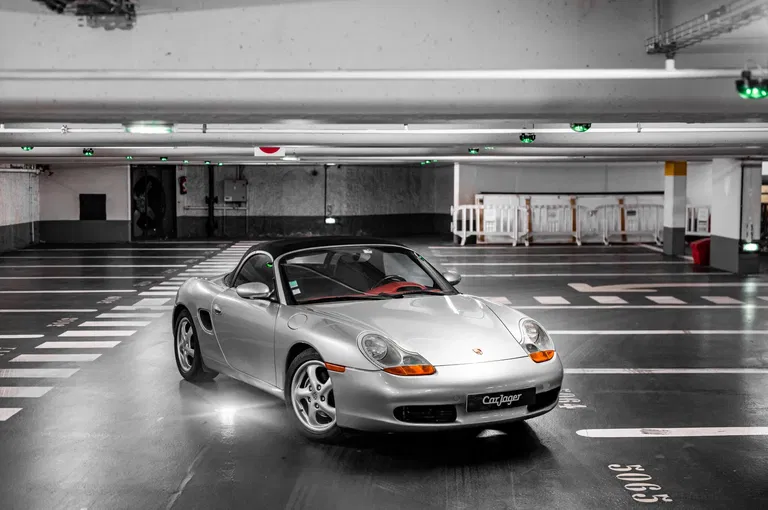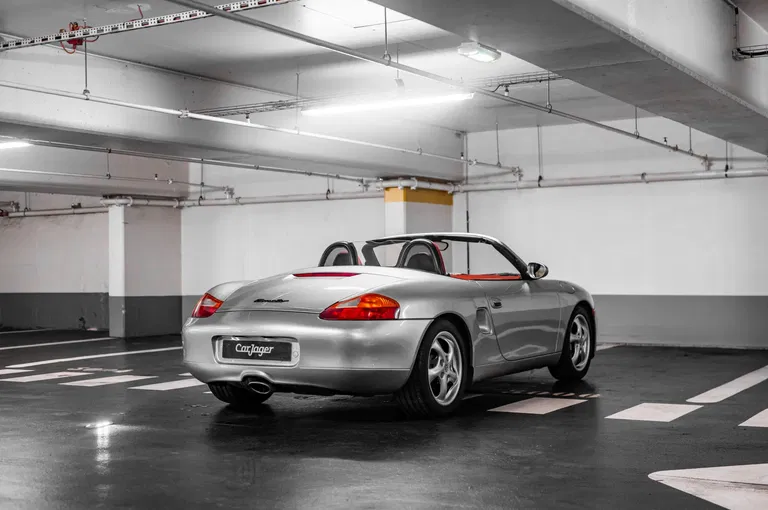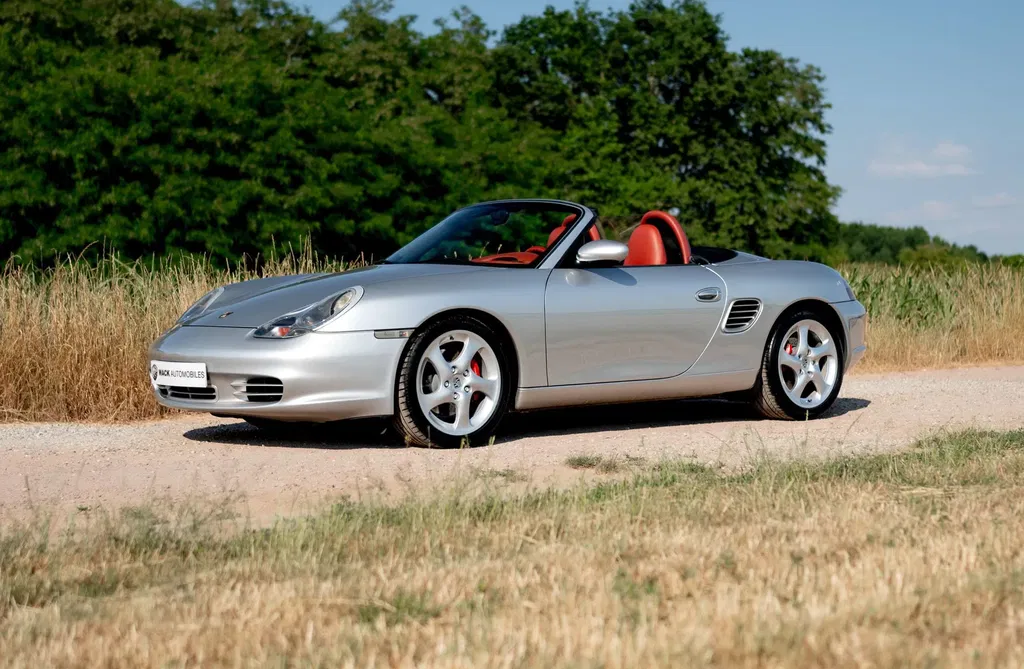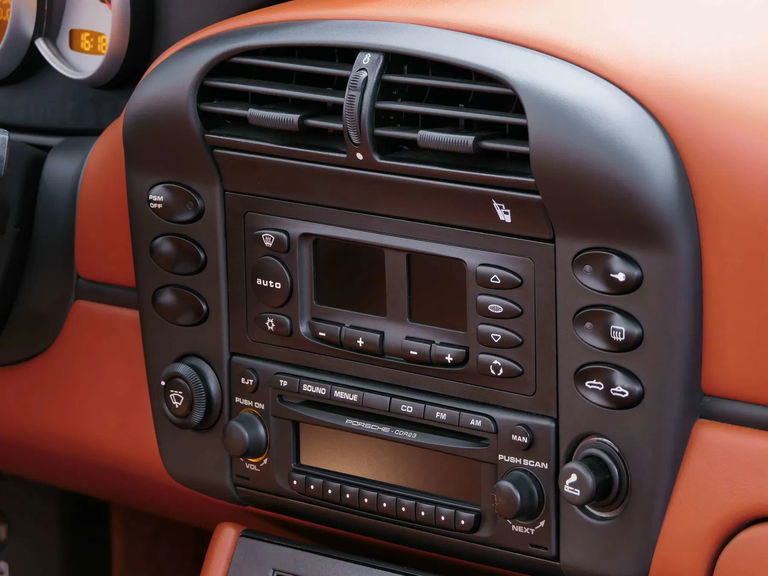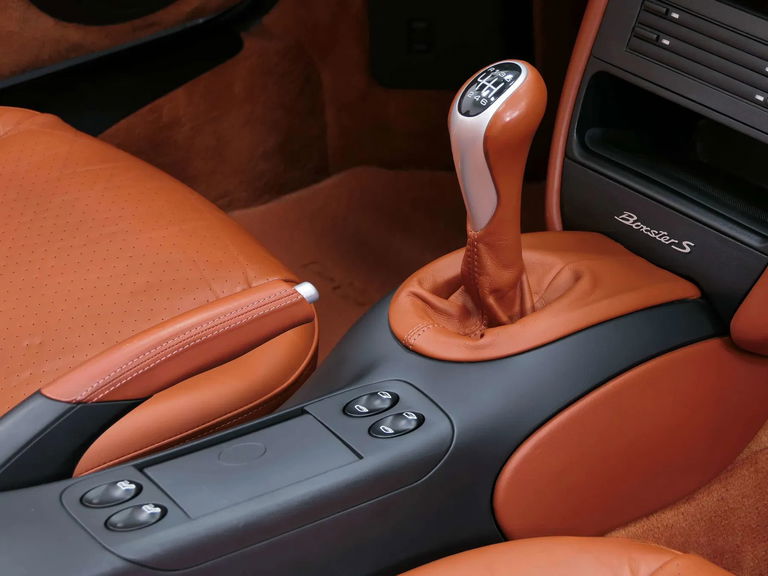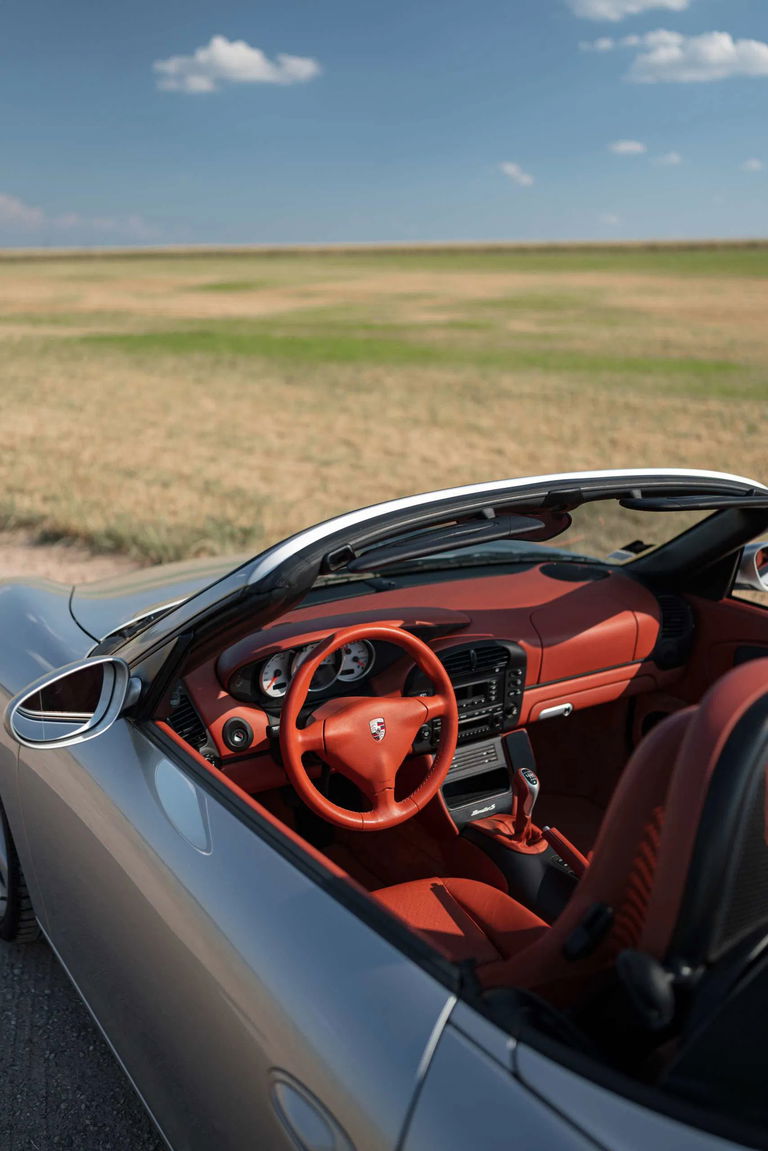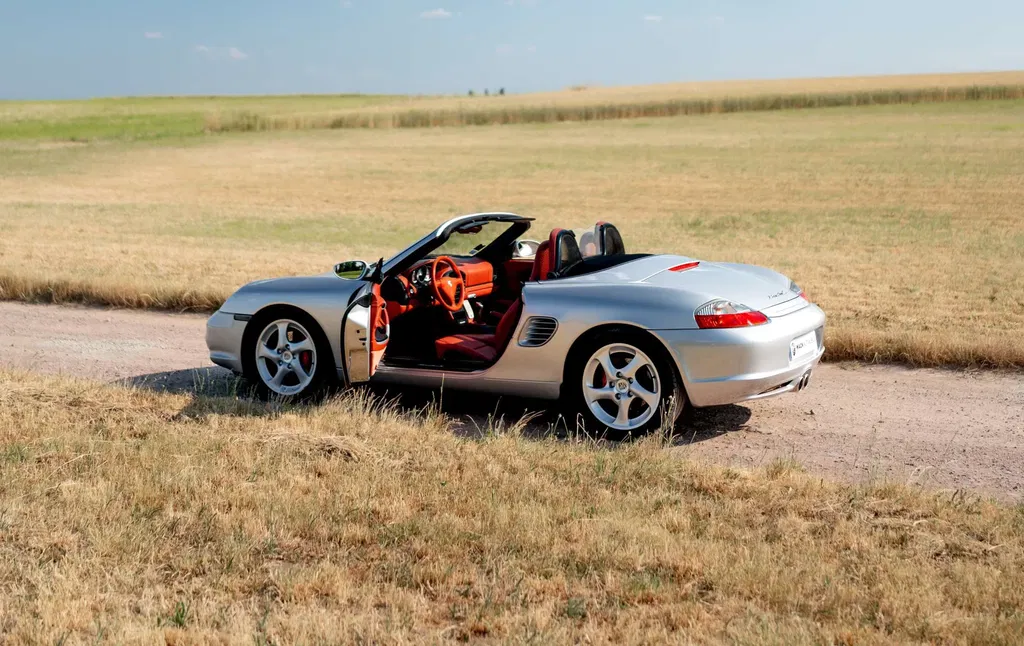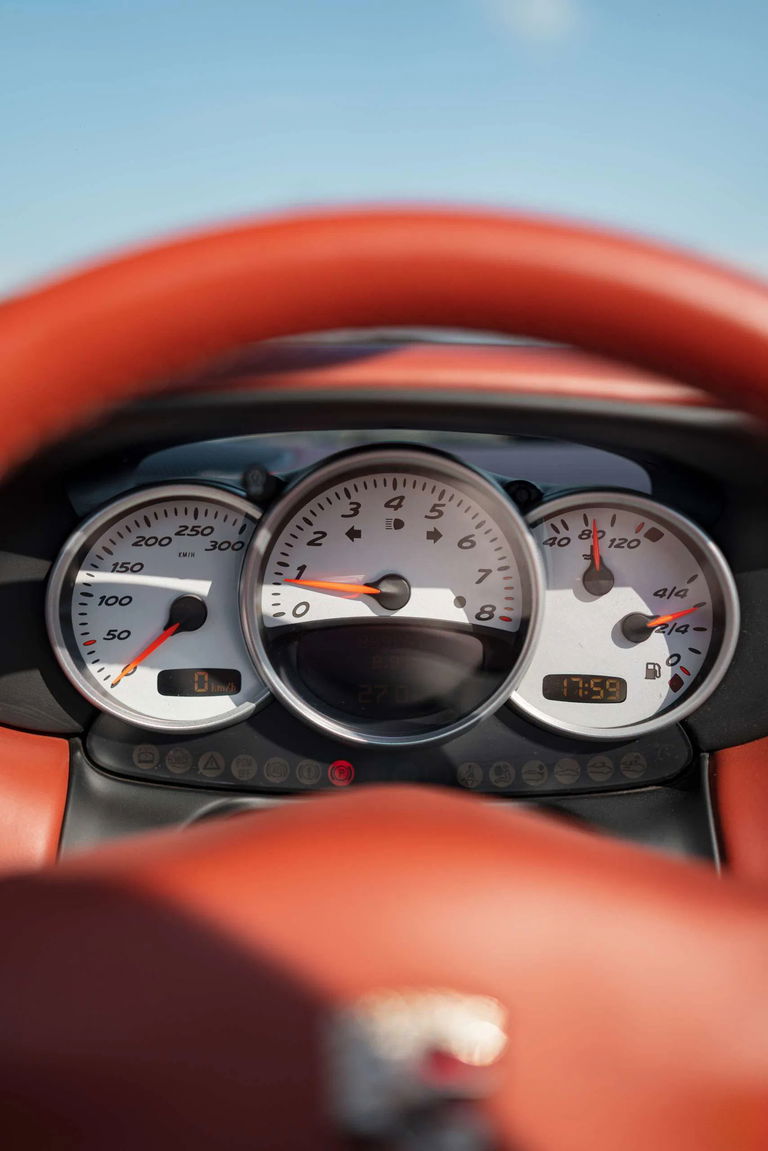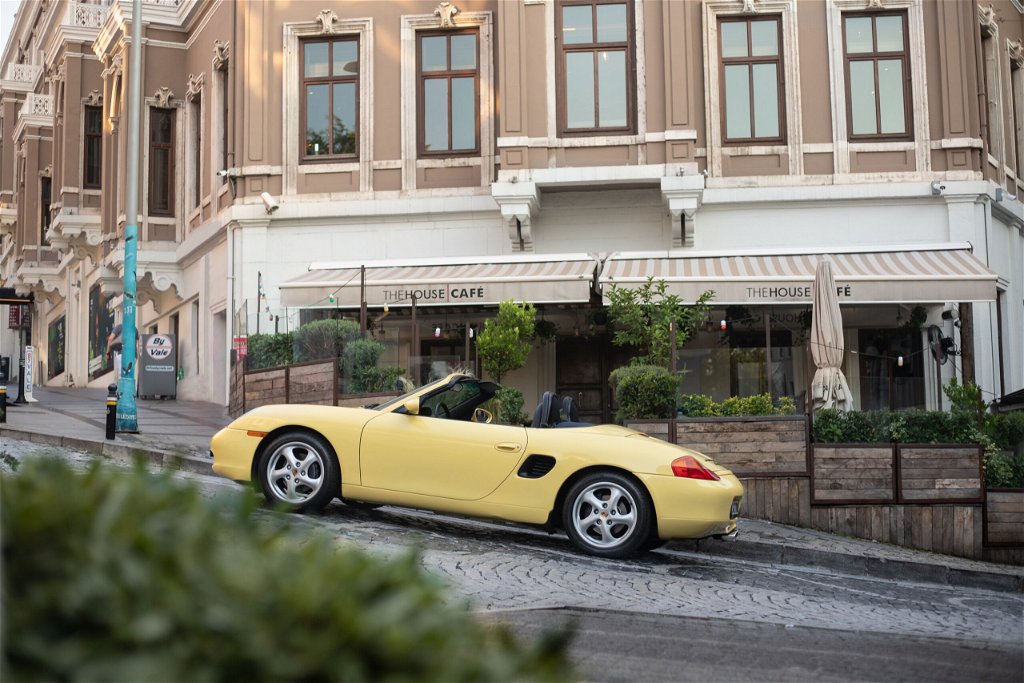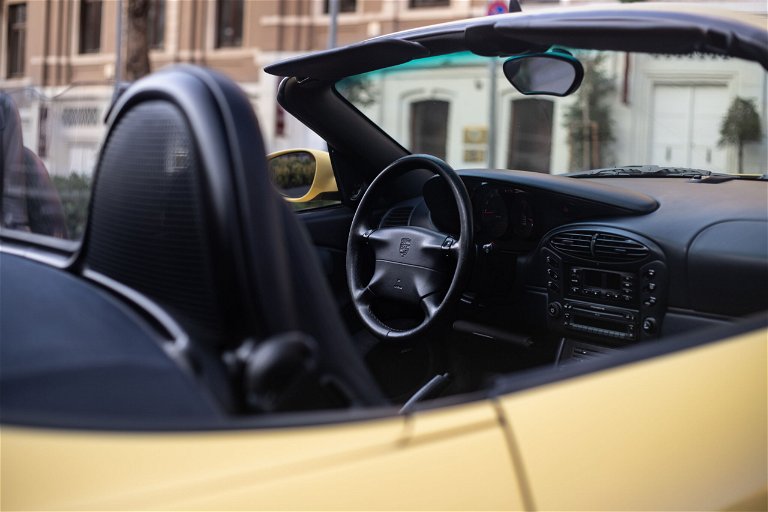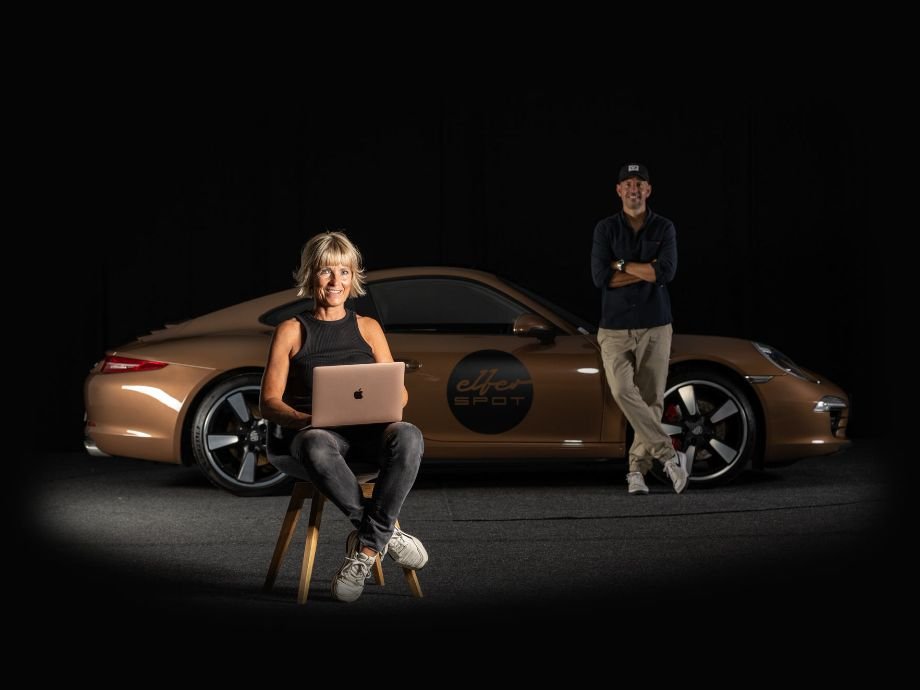Porsche Boxster 986 – loved, then spurned, now loved again – But why?
What delighted Porsche fans at the 1993 Detroit Motor Show and became a bestseller from 1996 onwards was spurned for a long time. As a car “for those who couldn’t afford a 911”, the Porsche Boxster 986 had a tough time on the used car market. But times change. The first generation of the water-cooled two-seater from Zuffenhausen is now experiencing a real comeback. While good cars were available for four-figure sums for many years, a great Boxster in 2025 will easily cost 20,000 euros or more. But why was this superbly balanced roadster ever so affordable in the first place? And why has there been a gradual turnaround in recent years?
The first Porsche Boxster was a resounding success right from the start
The recipe sounded promising. A six-cylinder boxer engine, which had been shaping the brand’s character for decades, in a small, lightweight mid-engine roadster. The combination of boxer and roadster also gave it the name Boxster – an expression of Swabian pragmatism. What made the Porsche Boxster 986 particularly attractive was its entry-level price, however. At launch, it cost DM 55,000 less than a basic 911. That’s a whopping 42 percent less! No wonder Porsche sold a total of 55,705 Boxsters in the first three model years, 1997, 1998 and 1999. Although there was initially only one engine option, the 204 hp 2.5-liter engine, the Boxster was able to compete with the 911 in terms of sales.
Porsche began work on the Boxster Concept, unveiled in 1993, at the end of 1991. The response to the concept car in Detroit was so positive that the production Porsche Boxster looked very similar in the end. © Porsche AG
The headlights, quickly dubbed “fried egg headlights”, were not to everyone’s taste, but their commercial success proved the styling team led by Harm Lagaay right. Although the Boxster – like the 924 and 944 before it – was stigmatized as a poor man’s Porsche, it was a huge success. Its driving dynamics, with excellent balance thanks to the mid-engine concept, and the breathtaking sound made it particularly desirable.
After the overwhelming public response to the Boxster study at its presentation in Detroit in January 1993, we were finally certain that we had made the right decision together.
Horst Marchart, Former Porsche Executive Board Member for Research and Development
Following the successful launch of the 986, Porsche revamped its engine range for the 2000 model year. The base model was equipped with a 2.7-litre engine and 220 hp. In addition, there was the Boxster S with 252 hp, whose performance was not far off that of the 911. Unlike the standard Boxster, the S came with a 6-speed manual transmission rather than a 5-speed. In 2003, the base Boxster was revamped again and received 228 hp. Its body was also refreshed with newly shaped side panels and grille surrounds painted in the car’s color.
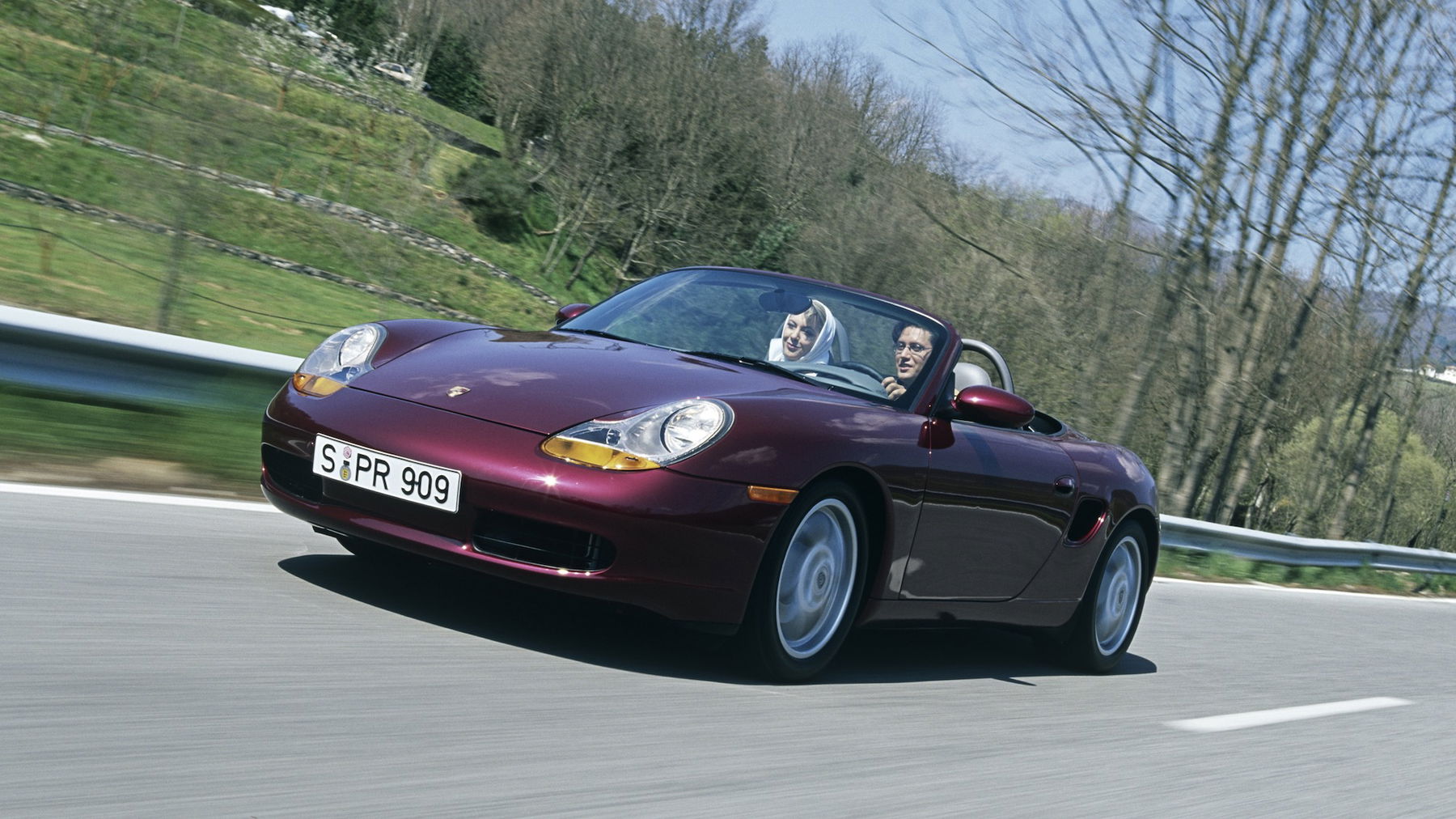
From hype to image problem
But what later caused the 986’s problematic image in the Porsche scene? Well, the cause has less to do with the Boxster itself than with the Porsche 911. The decision to launch the big brother, the first water-cooled 996-type 911 with the same front end, had consequences. 911 buyers were annoyed that their car, which was almost twice the price, was difficult to distinguish from the Boxster at first glance.
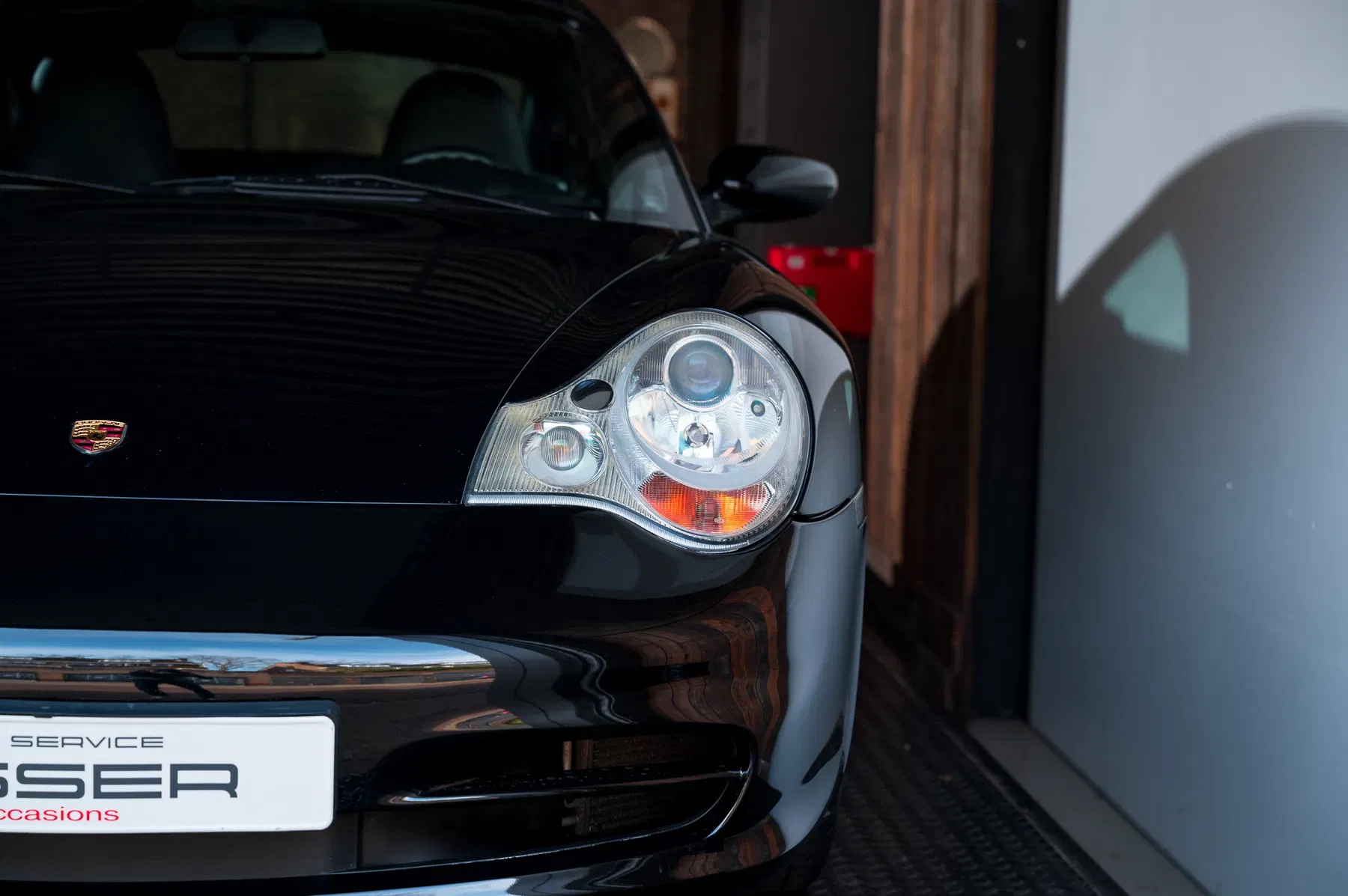
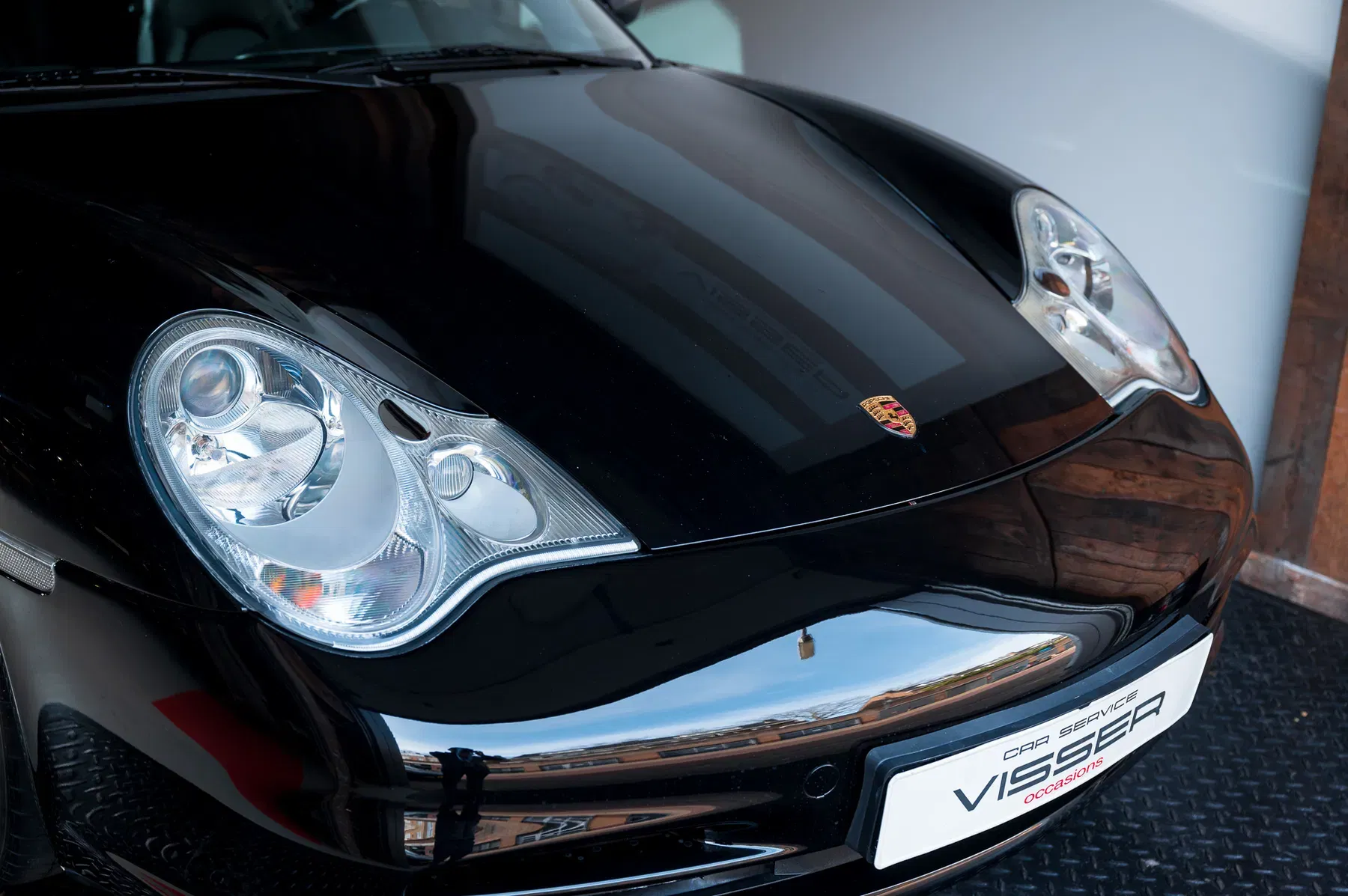
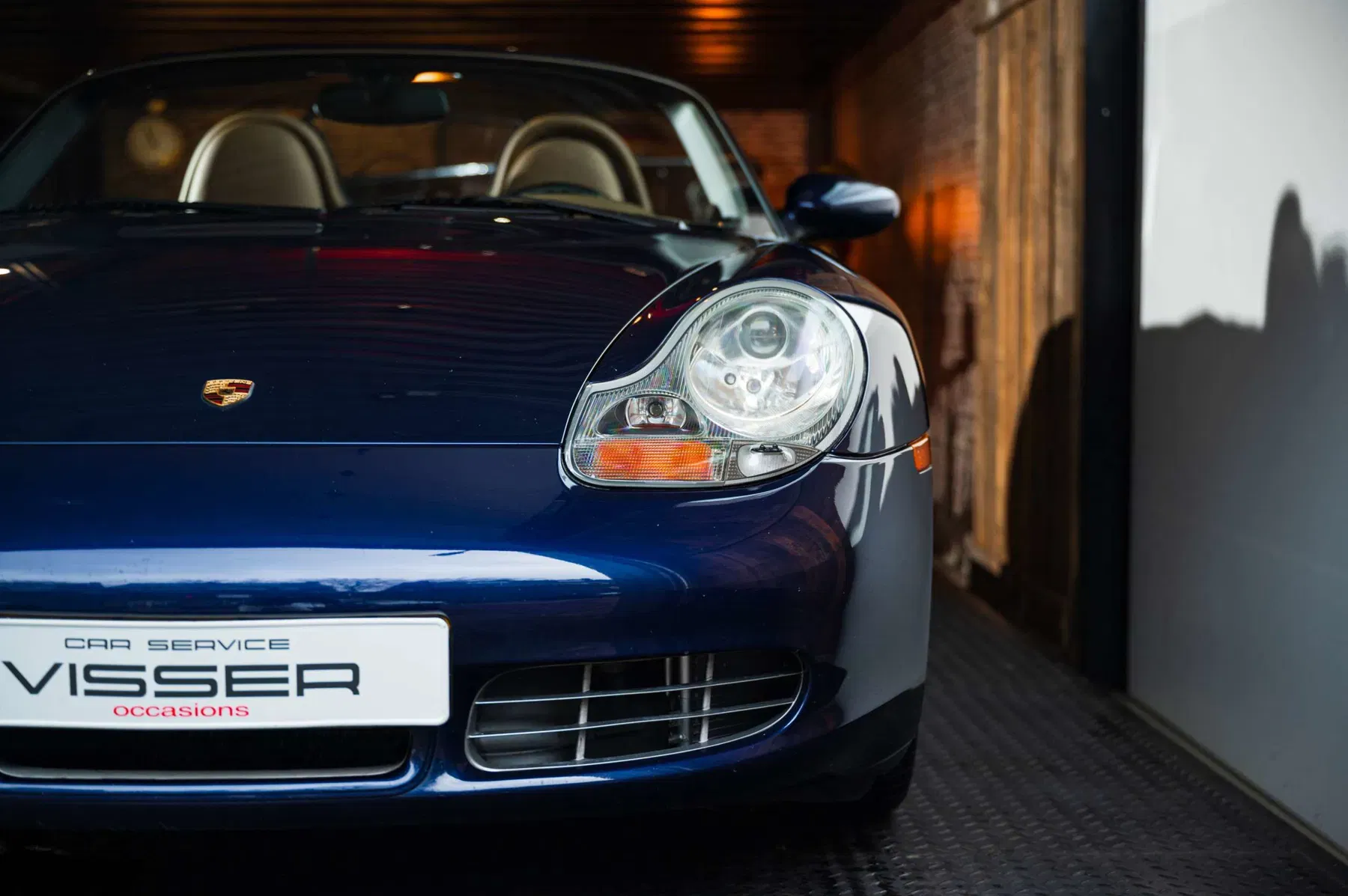
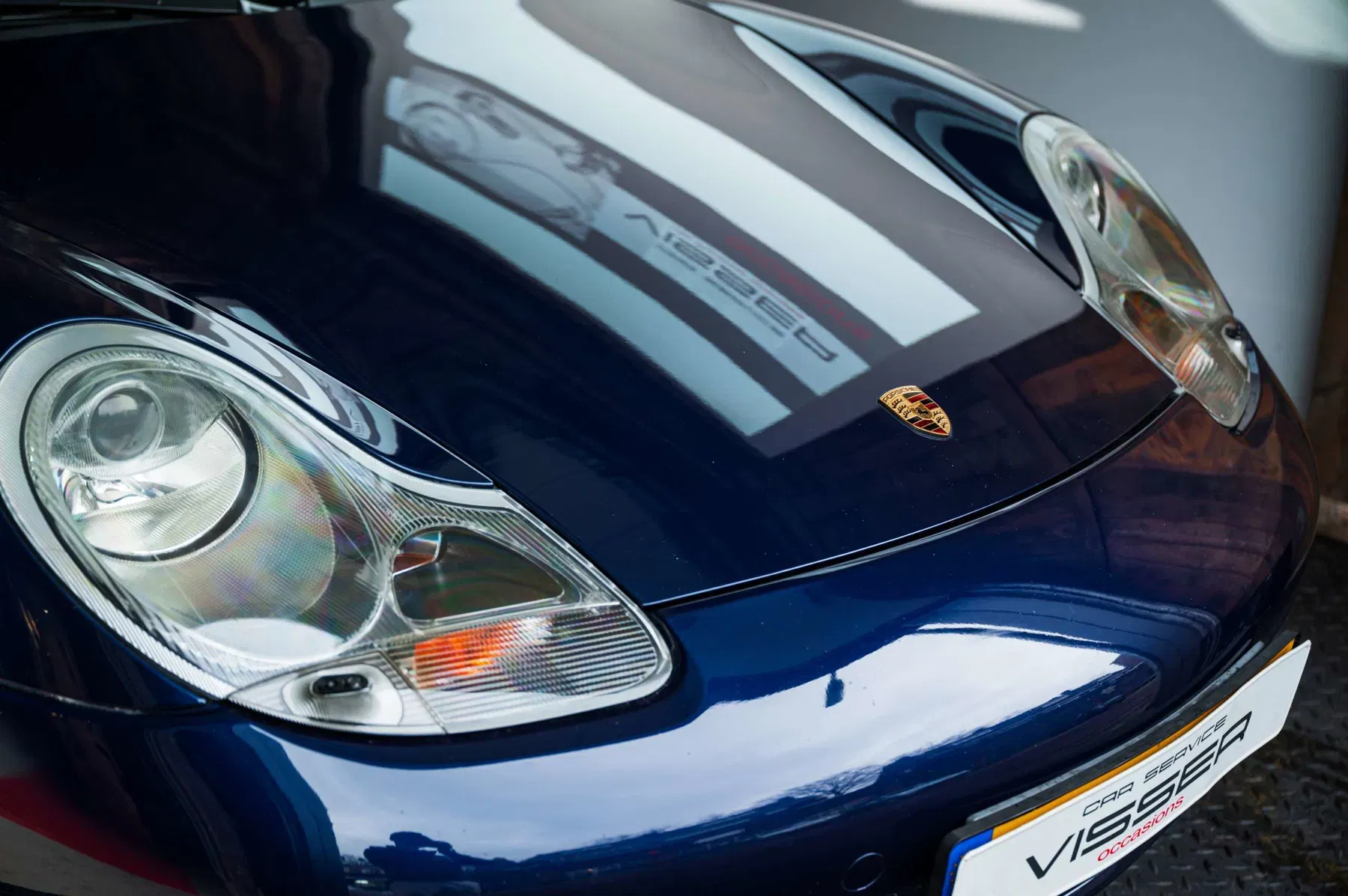
Looking back, the 911 buyers, who were not entirely unjustified in their annoyance, longed for more differentiation from the entry-level Porsche. Porsche responded and changed the headlights of the 911 for the 2002 model year. This gave the 996 a more distinctive look again. The Porsche Boxster 986 retained the classic headlight shape until production ended in 2004. Was this an admission that Porsche had expected too much production optimization (“Kai-Zen”) and too much common parts policy from its customers? Harm Lagaay once said, “After selling 320,000 fried eggs, the cafeteria can’t have been that bad.” Incidentally, 164,874 of those were Boxsters…
After selling 320,000 fried eggs, the cafeteria can’t have been that bad.
Harm Lagaay, Former Head of Porsche’s Design Department
So everything was fine on the corporate side. For Porsche, the 986 was a liberating move. With it, Wendelin Wiedeking succeeded in making Porsche profitable again at the end of the 1990s. However, the fate of the first Boxster was far less glamorous on the used car market. After the presentation of its successor, the 987, the once-hyped roadster became something of an ugly duckling. After all, the new model was more appealing, less controversial, and, on top of that, had finally arrived in the 21st century in terms of its interior.
The Porsche Boxster 986 was at times cheaper than transaxle models
What followed was an extreme decline in value, which peaked in the 2010s. At the beginning of the decade, roadworthy 986s cost about as little as 944 or 924 S models. At times, Porsche Boxster 986s with high mileage could be found for as little as 5,000 euros! Enthusiasts shunned the Boxster during this period. It was simply considered “uncool” to drive a 986. The renaissance of the transaxle Porsche even led to the four-cylinder models becoming more expensive than the much more modern six-cylinder roadster.
Until around 2020, well-maintained Porsche Boxster 986 models sometimes cost less than 10,000 euro.© CarJager
At least until 2020, attractive Boxsters, and in some cases even the later Boxster S models, regularly cost less than 10,000 euro. Why would anyone pay more for a Boxster when its larger sibling, the 996, was available for just under 20,000 euro during the same period? Like many “affordable” Porsches before it, the Boxster thus suffered the fate of becoming a more or less normal used car. Often, the new owners couldn’t afford expensive repairs. And so the number of good Boxsters decreased, and its reputation suffered. Despite the fact that, for example, the much-cited bore score in the 986 occurred less frequently than in the 911 due to the smaller displacement and thus thicker cylinder walls.
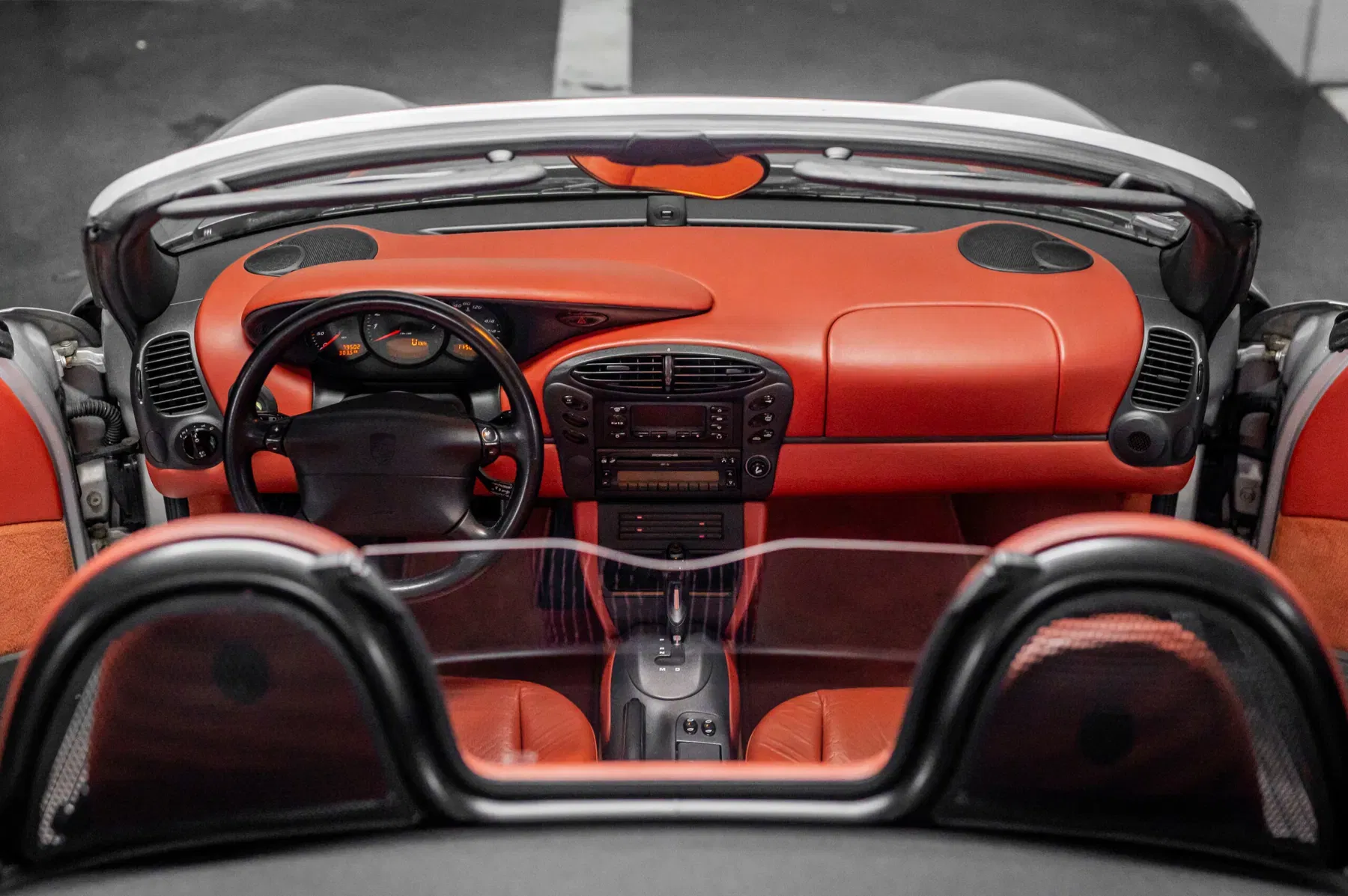
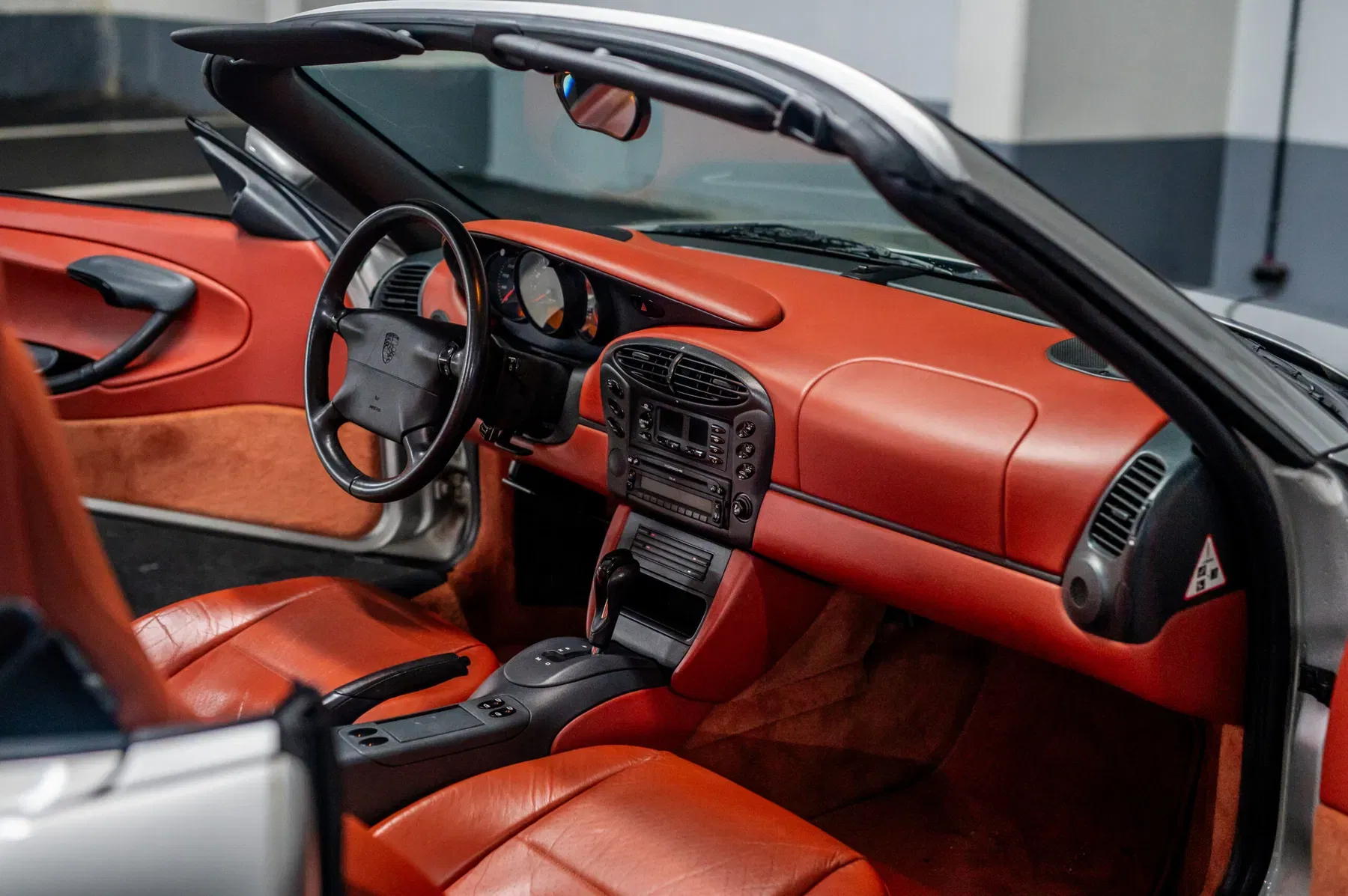
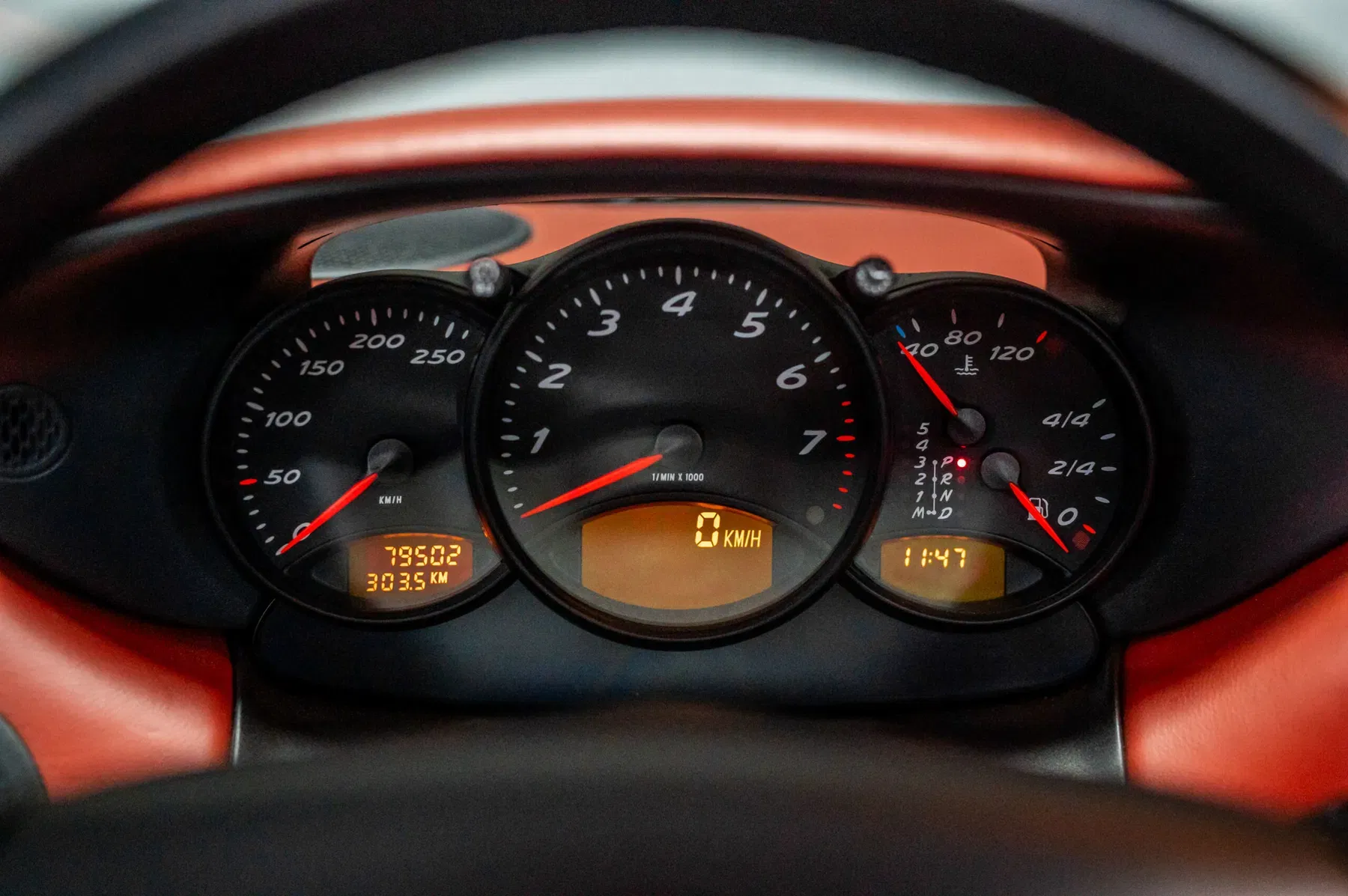
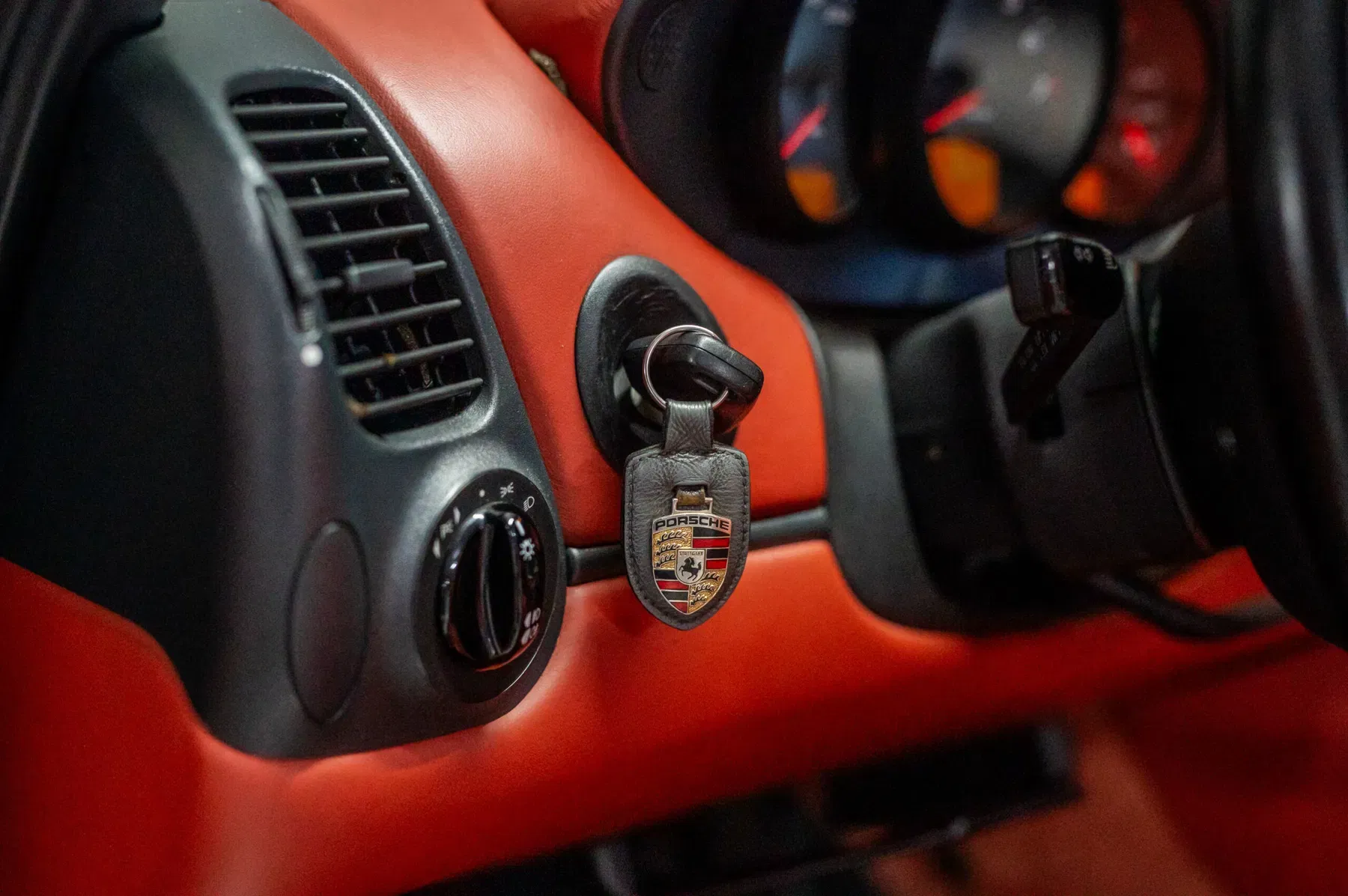
Rising prices for transaxle and 996 models drove up the price of the Boxster as well
What followed from 2020 onwards is well known. In principle, everything on the Porsche market became more expensive. Due to the fact that transaxle Porsches became much more popular than in previous years and the 996 also rose significantly in price, Boxster prices also increased. With the exception of the British market, it will be virtually impossible to find a good Boxster for less than 12,000 euro in 2025. Top-of-the-range models are now fetching prices in excess of 30,000 euro. This means that the best Porsche 986s with mid-five-figure mileage are once again approaching their original MSRP!
In 2025, really good Porsche Boxster 986 models with low mileage will cost at least 20,000 euro – and the trend is rising. © Wack Automobiles
The growing enthusiasm and acceptance of the 996 also made the Porsche Boxster 986 more interesting again. The fact that the transaxle Porsches – formerly THE entry-level models in the Porsche world par excellence – also gained in popularity at the same time led to rising prices for the 986 as well. Once spurned as the “poor man’s Porsche”, the 986 has blossomed into a serious alternative to the 911, especially in the last five years. It is particularly attractive as a first Porsche, as there is no other six-cylinder boxer engined car in this price range and no other car from Zuffenhausen that is as modern.
Once ridiculed, now back in the spotlight – the Porsche Boxster 986 is once again part of the establishment
Connoisseurs naturally took advantage of the fact that the first-generation Porsche Boxster was so affordable for a long time and secured themselves one. In a sense, the lightweight mid-engine roadsters are one of the last opportunities to drive a Porsche without regret. Even the base engine with 204 hp makes it a powerful source of joy. At the same time, it costs relatively little to maintain. Its performance also surpasses that of current top models from other roadsters. Even after more than 25 years, the 986 is still cutting edge…
The Porsche 986 has stood the test of time. Even though it has received less love from enthusiasts than it deserves, it is something of a secret star of the Porsche market in 2025. It is now celebrated for its design and simplicity, rather than being ridiculed for the shape of its headlights. And this is also reflected in the supply situation. Although over 160,000 units were sold, few of them are available on the market.
Eye-catching colors were relatively rarely ordered for the Porsche Boxster 986. As a result, models with striking colors, such as Onur Alpan’s Boxster in pastel yellow, are highly sought after and tend to be more expensive.© Doruk Barin
This can only mean that the lucky few who already have one of the first Boxsters in their garage don’t want to part with it. And for good reason – because the Boxster is agile, reliable, and even inexpensive to maintain and insure. It embodies exactly the values that Porsche had in mind for it. The Porsche Boxster 986 opened up a new, partly younger group of buyers and has played a major role in ensuring that the brand remains independent almost 30 years after its market launch.
Meanwhile, the Porsche Boxster 986 has finally returned to where it once was and where it belongs – in the hearts of Porsche enthusiasts.
© cover image: Porsche AG
Elferspot magazine
You have reached your article limit for this month.
Become an Elferspot Member now and get unlimited access to our Elferspot Magazine and other features!
- No obligations or charges.
- We help you find your dream car: get newly added cars straight into your mailbox.
- Your own watch list for your favorite cars.
- Unlimited access to Elferspot Magazin.
- -10% welcome discount for Elferspot textile products
- Successfully sell your Porsche via Elferspot.
